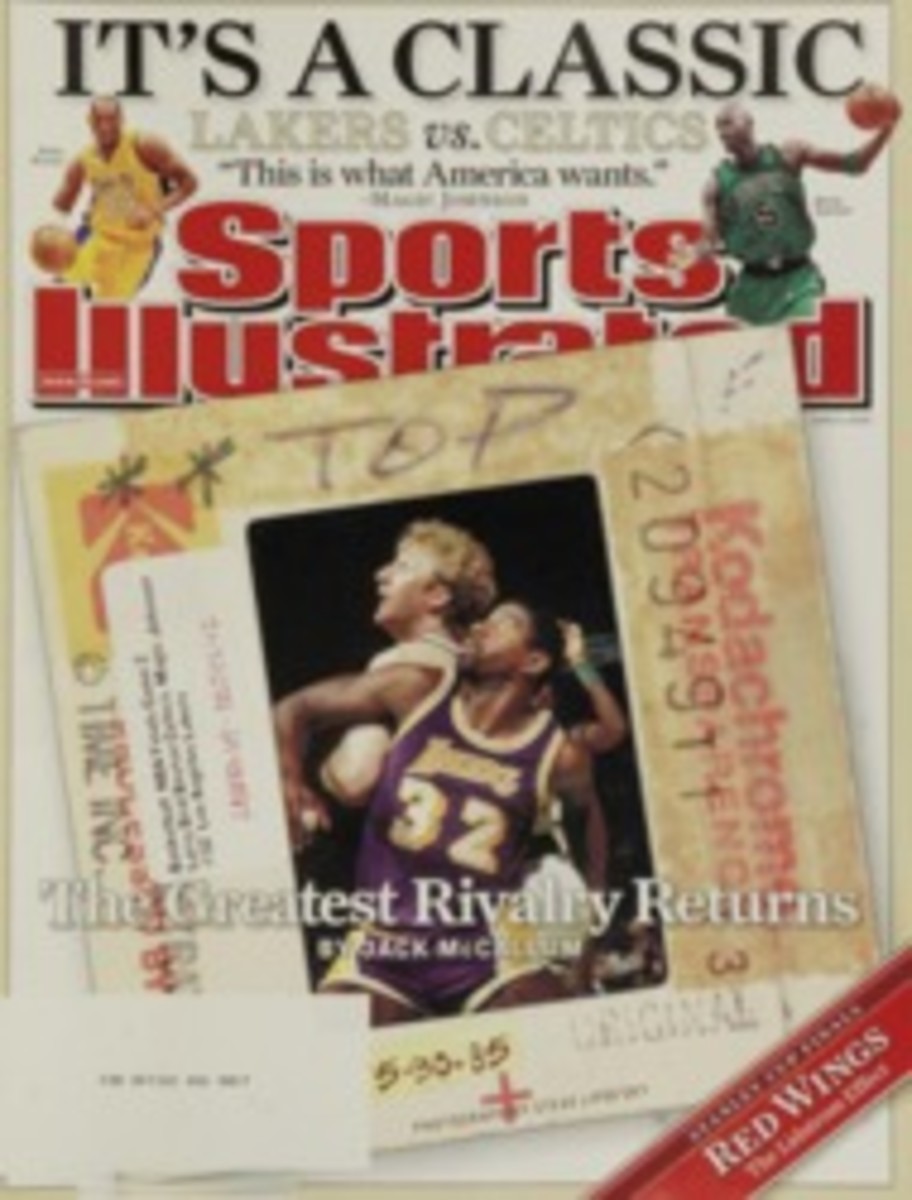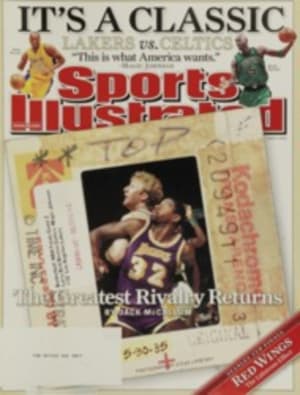
The Defense Never Rests
THROUGHOUT THE Celtics' rise from second-worst team in the league to NBA finalist, the biggest revelation has been that old dogs really can learn to slide their feet, fight through screens and close out on shooters. "I was laughing the other night—I've never seen Ray Allen play so much defense in his life," says Trail Blazers coach Nate McMillan, who coached Allen for 2 1/2 years with the Sonics. "At the end of Game 5 [in the Eastern finals against the Pistons] he gave weakside help then sprinted to the three-point line to challenge the jump shot. I remember when [he] was spinning around in circles on a pick-and-roll."
How has a team of offensive-minded veterans like guard Allen and forward Paul Pierce become the league's dominant defensive unit in one short, magical season? Part of the answer lies in maturity: In the off-season president of basketball operations Danny Ainge traded away five players under 30 (plus last June's first-round pick) and began to assemble a roster that now has nine players 30 or older—including 32-year-old forward Kevin Garnett, the Defensive Player of the Year. "Young guys want to run-and-gun," says Celtics coach Doc Rivers, "but veteran teams are always defensive teams."
In recent years Rivers had earned a reputation as an offensive coach with a minimal interest in defense; in fact, Rivers was voted Coach of the Year in 2000 because of the heart-and-hustle D he installed in Orlando with Ben Wallace, Bo Outlaw and Darrell Armstrong. What's more, in his 13-year career Rivers played point guard under Mike Fratello, Larry Brown and Pat Riley, "three of the best defensive coaches who ever walked the earth," he says. That's why he tried to hire Brown as his lead defensive assistant last summer before settling on longtime Jeff Van Gundy aide Tom Thibodeau. Rivers knew that he would be preoccupied with persuading Garnett, Pierce and Allen to adapt to one another on offense; he needed Thibodeau to do the coordinating—and yelling—at the other end of the floor. "There's days when we want to wring Tom Thibodeau's neck," says Garnett. "But he keeps us intact, and the more we saw the results, the more we fell in love with it. [Defense is] our backbone now."
Thibodeau's defensive scheme is a bug-free marriage of hardware and software. The programming is straight out of the Van Gundy manual: Keep the ball out of the paint, shrink the floor by overloading defenders to one side and try to contest every shot. Rarely does Thibodeau tweak the game plan by calling a variety of sets from the sideline. The Celtics are committed to their basic man-to-man principles, and when a certain approach isn't working, the staff's first adjustment is to demand greater effort. During the season the Celtics ranked No. 1 in overall field goal defense (41.9%) and three-point defense (31.6%), a remarkable double for a team that regularly leaves players open off the ball. "They put five guys on half of the floor—they really believe in loading up the strong side," says Grizzlies coach Marc Iavaroni. "They're very hard on showing and trapping the pick-and-roll, and they have great ball pressure. If you're on the ball, people can't pick you apart."
The platform is built around the 6'11" Garnett, who has been Russellesque in shouting commands and guarding every corner of the court. "Kevin made [the transformation] possible," says Rivers, who devotes 60% to 70% of practice time to defense. "When your best player buys in defensively, then everybody has to follow." Boston also has a punishing but surprisingly nimble center in Kendrick Perkins, a 6'10" 280-pounder who can show out to the three-point line yet get back to block shots and rebound; a versatile sixth man in 6'8" James Posey, who is re-creating the crucial defensive stopper role he played during the Heat's 2006 championship run; and a long-armed ball hawk in second-year point guard Rajon Rondo, one of the league's quickest players.
Against the Lakers, the initial responsibility of guarding league MVP Kobe Bryant will fall to Allen. But Boston will be wary of helping on Bryant too much because Los Angeles surrounds him with floor-spacing scorers such as Pau Gasol, Lamar Odom and Vladimir Radmanovic. "Kobe is going to take shots, but it's important we don't foul him and send him to the free throw line," says Allen, hinting broadly at Boston's strategy. "Keep a swarm around him, but don't let those other guys start figuring out the game and getting confident out there."
It's a tough assignment, but if the Celtics can pull it off, one of the greatest makeovers in NBA history will be complete.
PHOTO
ELSA/GETTY IMAGES
BOXED IN The Celtics overload the strong side of the floor, which means heavy traffic for Bryant whenever he drives the lane.

